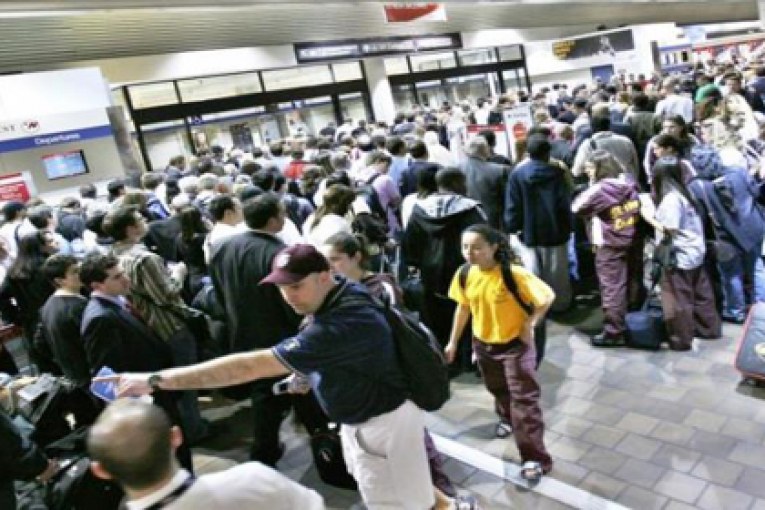
aTP- Arab tourism portal News- (Geneva) – The International Air Transport Association (IATA) announced global passenger traffic results for May showing that demand (measured in revenue passenger kilometers, or RPKs) rose 7.7% compared to the same month in 2016. This was slower than the 10.9% growth recorded in April. However, this still was well ahead of the 5- and 10-year average growth rates. Capacity climbed 6.1%, and load factor rose 1.2 percentage points to 80.1%, which was a record high for the month. All regions, excluding the Middle East and North America, posted record-high May load factors.
After adjusting for inflation, airfares at the start of the second quarter were around 6% lower than a year ago. IATA estimates that this contributed to around two-fifths of the annual growth in passenger traffic seen in May. However, the degree of fare stimulus is around half that seen in the second half of 2016. This stimulus is likely to fade further in light of rising airline cost pressures, while business confidence has softened. However, passenger demand is likely to remain well supported during the upcoming peak travel months of July and August.
“Passenger demand is solid. And we don’t foresee any weakening over the busy summer months in the Northern Hemisphere. But the rising price of fuel and other input costs is likely to see airlines’ ability to stimulate markets with lower fares taper over the coming months. In parallel, rising trade protectionism and barriers to travel are worrying trends that, if unchecked, could impact demand. As a business airlines depend on borders that are open to trade and people,” said Alexandre de Juniac, IATA’s Director General and CEO.
International Passenger Markets
International traffic demand rose 7.6%, with airlines in all regions recording growth, led by airlines in Africa for a second consecutive month. Total capacity climbed 5.7%, with load factor rising 1.4 percentage points to 78.5%.
European carriers’ May demand climbed 7.5% over May 2016, down from the 14.5% year-over-year growth recorded in April. Capacity rose 5.2% and load factor was up 1.8 percentage points to 82.8%, which was the highest among regions. Seasonally-adjusted demand growth has moderated over the past three months, despite growing momentum in the region’s economy. This appears to relate mostly to a pause in the recovery in international traffic within the region.
Asia-Pacific airlines saw their traffic rise 10.5% in May compared to the year-ago period. Capacity increased 7.2%, and load factor jumped 2.3 percentage points to 77.6%. Traffic on the Asia-Europe route has recovered strongly since last year’s terrorism-related disruption, surging at an annualized rate of more than 26% since November. Meanwhile, traffic on inter-Asia routes remains robust.
Middle East carriers had a 3.7% rise in demand in May compared to a year ago, close to an eight-year low. Capacity increased 5.7%, and load factor dropped 1.3 percentage points to 69.8%. Although year-to-year comparisons are distorted by the strong performance for the same period a year ago, the slow-down also reflects the ban on the carriage of large portable electronics devices (PEDs) in the cabin from 10 airports in the region to the US, as well as a wider impact on inbound travel to the US from the Trump Administration’s proposed travel bans. Passenger traffic growth on the Middle East to North America market was already slowing in early-2017. But RPKs fell again in April (-1.2%) for just the second time since at least 2010. In view of the recent Supreme Court ruling these impacts could continue. By comparison, the route to and from Europe has continued to trend upwards this year.
North American airlines’ traffic climbed 4.8% in May, down from 10.3% annual growth in April but still a strong result for the region compared to the 5-year average growth rate. While growth has slowed of late, the comparatively healthy regional economic backdrop, coupled with the strength of the US dollar, should support outbound passenger demand, although the latter impacts inbound demand. Anecdotal evidence also suggests that tourists may be deterred by the additional security measures put in place by the US government. Capacity rose 4.2% and load factor climbed 0.5 percentage points to 80.5%.
Latin American airlines experienced a 9.3% increase in traffic in May compared to the same month last year.
Notwithstanding ongoing challenges, an improvement in the Brazilian economy is helping to support growth, particularly on intra-South American routes. Airlines are coping well with some political and economic volatility in the region. Capacity climbed 6.8% and load factor climbed 1.9 percentage points to 81.8%.
African airlines’ traffic rose 11.7% in May compared to the year-ago period, which was more than twice as fast as the 5.1% rise in capacity. As a result, load factor jumped 4.0 percentage points to 67.5%. Demand is supported by recovery in the key Europe market. Conditions in the region’s two largest economies are diverging, with business confidence in Nigeria rising sharply over the past six months, while South Africa’s economy fell into recession in the first quarter.
Domestic demand rose 7.9% in May compared to May 2016, down slightly from the 8.1% year-on-year growth recorded in April. Results varied widely, with China, India, Japan and Russia showing double-digit percentage growth while other regions were in the low single-digit range.
Japan’s domestic traffic surged 10.3% year-over-year, which was close to a five-year high. The rise in demand far outpaced the growth in capacity (2.6%) and domestic load factor jumped to a record high for May of 69.1%, although this was still the lowest among the markets. This performance continues to be set against a comparatively robust economic backdrop including economic expansion for five consecutive quarters, which is the longest run in more than a decade.
Brazil’s domestic market experienced year-over-year growth (2.6%) for only the third time in 22 months amid an improving economic backdrop, although the political backdrop remains fragile. Passenger volumes are still 8% lower in seasonally-adjusted terms than their late-2010 peak.
The Bottom Line
On 28 June 2017, the U.S. Department of Homeland Security (DHS) announced new enhanced security measures as an alternative to global restrictions on the carriage of large PEDs in the cabin on flights to the U.S. The new measures will be introduced over the next months across 280 locations worldwide.
“Enhanced security measures are preferable to the expansion of the current ban on the carriage of large electronic devices in the cabin. We have seen the negative impact that this has on demand. But the timeline to implement the enchanced security measures announced by the US DHS is extremely challenging. And there are many unresolved issues that need greater cooperation among states to minimize the impact on air travelers and global connectivity,” said de Juniac.









